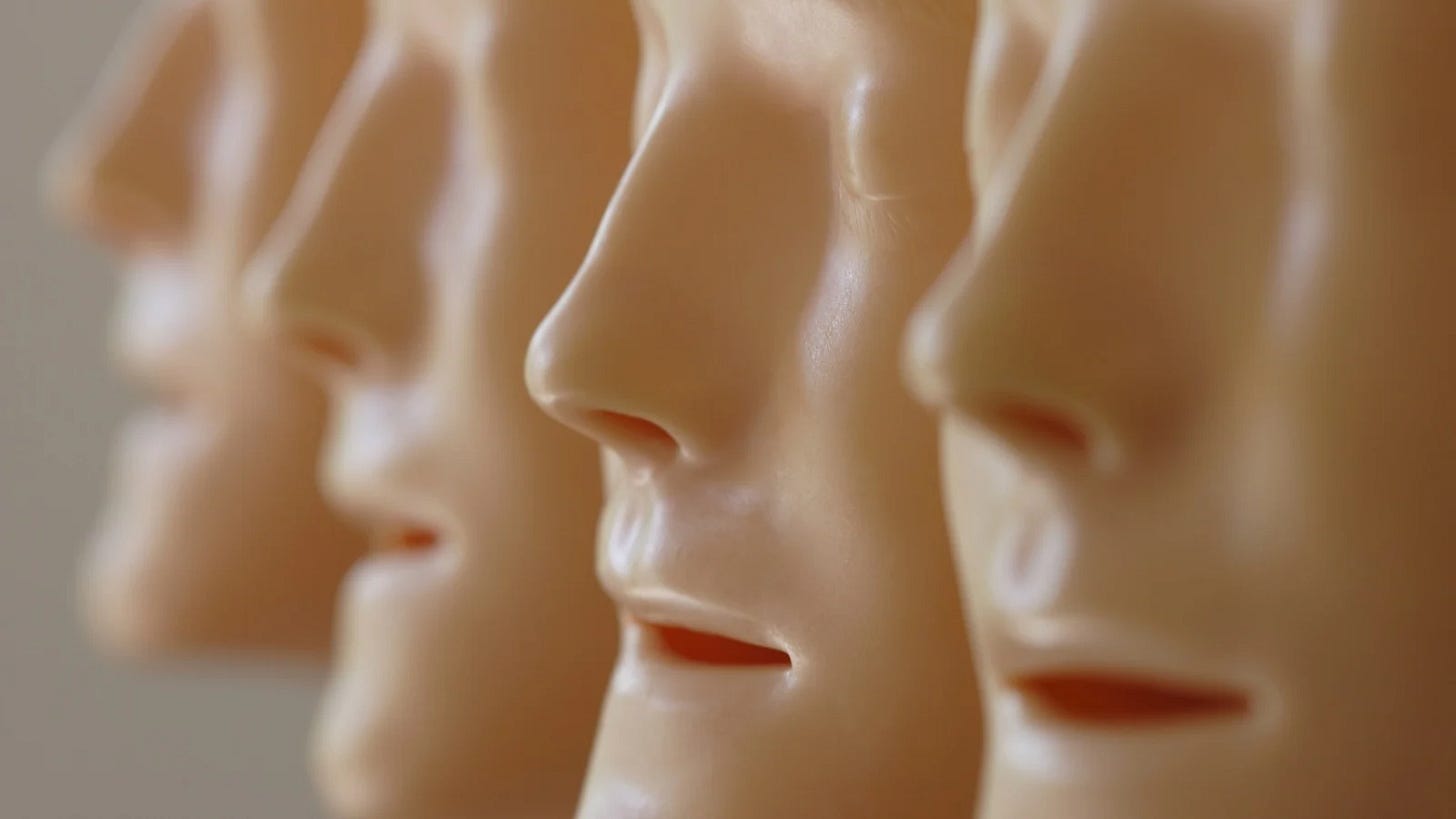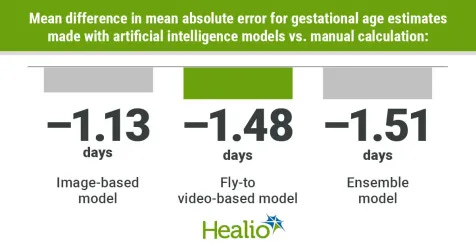Sci-Ed Update 240
What?! Another "new organ?" This one is a thin membrane disappears as the brain is removed during dissection. That, and other stories, in this update.
A cross-section of the skull (top) and the outer layer of the brain, showing the subarachnoid lymphatic-like membrane in green | University of Copenhagen
We've just discovered a new part of the brain's waste disposal system
A thin layer of tissue called the subarachnoid lymphatic-like membrane, or SLYM, keeps fresh cerebrospinal fluid separate from fluid containing waste from brain cells
The tissue is a thin membrane encasing the brain that keeps newly made cerebrospinal fluid – which circulates inside the brain – separate from “dirty” fluid containing cells’ waste products.
It was already known that there are three membranes between the skull and the brain. The new structure is a fourth membrane, lying on top of the innermost membrane, called the subarachnoid lymphatic-like membrane (SLYM). It is extremely thin, with a width of just a few cells or, in places, even one cell.
The SLYM hadn’t been noticed before, partly because the membrane disintegrates when the brain is removed from the skull in post-mortems, says Maiken Nedergaard at the University of Rochester Medical Center in New York, who helped discover the structure. It is also too thin to be seen in living people via brain-scanning machines.
The tissue was first discovered in mice, after Nedergaard’s team used a genetic labelling technique that made the SLYM’s cells glow fluorescent green. It was then also observed covering human brains by dissolving away the skull in bodies donated for research.
Read more→ AandP.info/11l
In the first segment of Winter Shorts episode 130, I explain why I think storytelling is the heart of teaching anatomy and physiology. It’s short, yes, and worth a quick listen!
To listen to this episode, click on the player (if present) or this link→ theAPprofessor.org/podcast-episode-130.html
(Credit: Getty Images/photoworldwide)
Microsoft's AI Program Can Clone Your Voice From a 3-Second Audio Clip
The technology, while impressive, would make it easy for cybercriminals to clone people's voices for scam and identity fraud purposes.
KP: this article talks about yet another application of AI that could soon infiltrate the learning environment. We’ve heard of courses built by now-retired—or even now-deceased—faculty but still taught with all the video presentations made by the original, perhaps late, instructor. Now, we could have course updates, new assignments, or even whole new courses “taught” by popular or famous professors. Heaven save us.
Read more→ AandP.info/vdy
DeSantis Allies Plot the Hostile Takeover of a Liberal College
This grandiose project has several parts. Rufo has been unparalleled in fanning public education culture wars, whipping up anger first against critical race theory and then against teaching on L.G.B.T.Q. issues. This year, he is turning his attention to diversity, equity and inclusion programs, and, with his colleagues at the Manhattan Institute, will soon unveil model legislation to abolish such programs at state schools. In New College, he sees a chance to create a new type of educational institution to replace those he’s trying to destroy. When we spoke, he compared his plans to Elon Musk’s takeover of Twitter.
KP: On a different dystopian front [from the AI story above], we have this story about an authoritarian leader attempting to remake an entire university as its opposite. We may believe that politics and government have nothing to do with teaching A&P, but we would be mistaken. Topics such as human identity, race, abortion, and many other topics are pertinent to how we teach our course and what kinds of discussions we have in our classes. For those of us in public education, we must be increasingly wary of our futures.
Read more→ AandP.info/i67
Data derived from Lee C, et al. JAMA Netw Open. 2023;doi:10.1001/jamanetworkopen.2022.48685.
Artificial intelligence may improve accuracy of gestational age estimation
Artificial intelligence models trained to analyze ultrasonograms may help sonographers more accurately estimate gestational age, according to data published in JAMA Network Open.
“Fetal ultrasonography is the cornerstone of prenatal imaging and provides crucial information to guide maternal-fetal care, such as estimated gestational age and evaluation for fetal growth disorders,” Chace Lee, MS, of Google Health in Palo Alto, California, and colleagues wrote. “Currently, the clinical standard for estimating gestational age and diagnosing fetal growth disorders is determined through manual acquisition of fetal biometric measurements, such as biparietal diameter, head circumference, abdominal circumference, femur length or crown-rump length.”
Since estimation of gestational age is reliant on sonographers’ skill and experience, researchers have worked to develop AI systems to assist sonographers in their estimations, according to study background.
KP: On the other hand, the dystopian possibilities of AI and educational reform could be used in appropriate ways—for good and not evil. Maybe we should pay attention.
Read more→ AandP.info/vm2
Viewing body positive posts on social media can help reduce harmful appearance comparisons. Image is in the public domain
Small Exposures to Body Positive Content Can Improve Body Image
Following people on social media who promote body positivity by posting images of different body shapes, sizes, colors, and abilities rather than images that focus on typical societal beauty standards can help to boost a person’s positive body image.
The study, published in the journal Body Image, shows that following social media pages celebrating different body sizes, shapes, colors and abilities—or “body positivity”—can help improve young women’s body image in everyday life.
Researchers from the School of Psychology, UNSW Science, tested whether viewing just a few body positive social media posts a day could positively impact body satisfaction and appreciation. In other words, could seeing a range of messages challenging unrealistic beauty ideals and promoting body acceptance at every shape and size help participants feel more secure about their bodies?
KP: If we can be body-positive in the way we present human anatomy and physiology, it may actively promote wellness in our students. I’m thinking that it can also be model for future health professionals, who can continue that approach with their clients. It may be a good idea to be transparent about this, telling our students that we are being intentionally body-positive and why.
Read more→ hAandP.info/k8z
ISTOCK, VLADIMIR SOLDATOV
Walnuts the New Brain Food for Stressed University Students
Stressed university students might want to add walnuts to their daily diet in the weeks leading up to their next exam.
A new clinical trial of undergraduate students during their university studies has shown positive effects of walnut consumption on self-reported measures of mental health and biomarkers of general health.
The University of South Australia study, published in the journal Nutrients, also suggests that walnuts may counteract the effects of academic stress on the gut microbiota during periods of stress, especially in women.
Lead researchers, PhD student Mauritz Herselman and associate professor Larisa Bobrovskaya, say the results add to the growing body of evidence linking walnuts with improved brain and gut health.
“Students experience academic stress throughout their studies, which has a negative effect on their mental health, and they are particularly vulnerable during exam periods,” Herselman says.
KP: Perhaps encouraging walnut consumption during exam week is a nutty idea, but who knows? It may help a little bit. And every little bit helps. And it’s likely to have better effects than the usual donuts or holiday cookies offered during exam week. (Caveat: be careful about students with tree-nut allergies)
Read more→ AandP.info/r1f
A study from the NIH finds that adults who stay well-hydrated develop fewer chronic conditions, such as heart and lung disease, and live longer overall than those who don't drink enough fluids. Wladimir Bulgar / Science Photo Library/Getty Images Plus
Poor hydration may be linked to early aging and chronic disease, a 25-year study finds
Findings from the National Institutes of Health suggest that people who don't drink enough fluids could face a higher risk of disease, but some researchers aren't convinced.
Adults who aren't sufficiently hydrated may age faster, face a higher risk of chronic diseases and be more likely to die younger than those who stay well-hydrated, according to a new study from the National Institutes of Health.
The results, published Monday, are based on data collected over 25 years from more than 11,000 adults in the U.S. The participants attended their first medical visits at ages 45 to 66, then returned for follow-ups through at ages 70 to 90.
The researchers looked at levels of sodium in the participants' blood as a proxy for hydration, because higher concentrations are a sign that they most likely weren't consuming enough fluids. The researchers found that the participants with high blood-sodium levels aged faster physiologically than those with lower levels, which was reflected in health markers associated with aging, like high blood pressure, cholesterol and blood sugar.
Read more→ AandP.info/ct9










